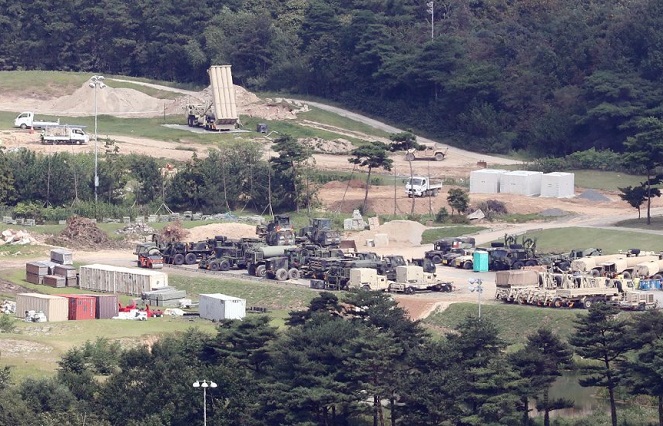
This undated file photo shows a U.S. THAAD battery in Seongju, 217 kilometers southeast of Seoul. (Yonhap)
SEOUL, March 25 (Korea Bizwire) — The U.S. Forces Korea (USFK) said Friday it has conducted the first training on the deployment of a “remote” launcher of its Terminal High Altitude Area Defense (THAAD) missile defense system in South Korea.
The U.S. military made public a set of photos of Sunday’s training, hours after the North’s state media reported the country had carried out drills involving an underwater nuclear attack drone and cruise missile launches earlier this week.
“The training of our THAAD forces enhanced the units’ combat readiness, combined defense posture within the alliance, demonstrates the ironclad commitment to support and defend the ROK and further strengthens the security and stability on the Korean Peninsula,” the USFK said in a press release.
ROK stands for South Korea’s official name, the Republic of Korea.
The drills took place in conjunction with the regular South Korea-U.S. Freedom Shield (FS) exercise that concluded its 11-day run Thursday.
The employment of the remote launcher came in line with the U.S. military’s upgrade program designed to streamline and integrate its THAAD and Patriot missile defense systems into a single program for enhanced and more flexible security operations.
The training came as the Seoul government has been pushing for the “normalization” of the THAAD battery in Seongju, 217 kilometers southeast of Seoul, which has held the status of a “temporary” installation pending an environmental assessment.
“Normalization of Terminal High Altitude Area Defense operations and capabilities provides USFK greater readiness to ensure continued resourcing of the unit, as well as providing greater opportunity to modify the defense design by exercising remote launch options,” the USFK said.
Meanwhile, the South Korean and U.S. Air Forces carried out aerial live-fire drills at a range in the Yellow Sea from Monday through Friday, in connection with the FS exercise, according to officials here.
The South deployed F-35A radar-evading fighters, F-15Ks, KF-16s, F-16s and F-4Es, while the U.S. mobilized A-10 attack aircraft.
The F-35A jets fired AIM-9X and AIM-120 air-to-air missiles and GBU-31 air-to-ground bombs, while the A-10 aircraft lobbed AGM-65 air-to-ground missiles and GBU-31 and GBU-38 bombs.
(Yonhap)






